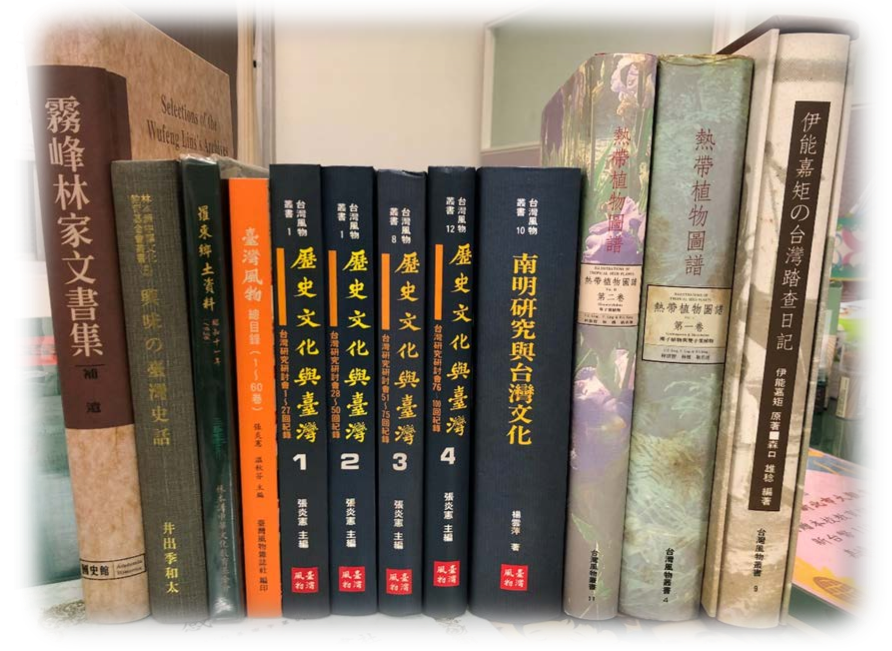 日本人的臺灣經驗~日治時期的移民村
日本人的臺灣經驗~日治時期的移民村
The Japanese experience in Taiwan:
the immigrant village during the Japanese period
林呈蓉/Lin Cheng-jung
(淡江大學歷史系副教授)
(Associate Professor, Department of History, Tamkang University)
2001-07-30
在台灣的東部地區,有許多頗具日本風味的鄉、鎮、村名,譬如池上村、瑞穗村、豐田村。這些鄉鎮的許多建築與水利工程皆述說著過往日本政府統治台灣的政策與經營方向。然而隨著日本的戰敗、日人的遷離與舊政府的刻意忽略,這段歷史逐漸隱沒於荒煙蔓草間。本週「台灣歷史之窗」特別邀請淡江大學歷史系副教授林呈蓉執筆,以其歷史學者的角度重現這段日治時期的台灣史。
The names of many townships, towns and villages in eastern Taiwan have a slightly Japanese flavor to them, such as Chihshang (Ikegami) Village, Rueisuei (Mizuho) Village and Fengtien (Toyota) Village. Much of the architecture and irrigation engineering tells us about the policies and management direction of the Japanese government during the period when it governed Taiwan. However, when the Japanese were defeated at the end of the Second World War, the departure of the Japanese from Taiwan and painstaking neglect by the KMT ensured that this period of history gradually sunk into obscurity. This week’s Window on Taiwan is written by Lin Cheng-jung, associate professor in Tamkang University’s history department, who looks at this period of Taiwan’s history under Japanese rule from a historian’s perspective.
解決國內人口問題之不二法門:移植殖民地台灣
近世末期日本受到西方自由主義殖民思想的影響,無論從人口繁衍、國防警備或產業調整等問題考量上,皆促使明治日本有識者意識到日本民族海外發展的重要性。特別從人口論的角度觀之,國民的海外移植已成為當時解決國內人口繁衍的不二法門。1895年,由於馬關條約的簽署,臺灣成為日本的殖民地,也為日本國內人口問題的解決,帶來了一道曙光。
The only way to solve the domestic population problem:move to the colony of Taiwan
Around the turn of the last century, Japan was influenced by Western ideas of liberal colonization, consideration of the rapidly increasing population, national defense and industrial adjustment led those people with foresight in Meiji Japan realize the importance of developing the Japanese race overseas. From the perspective of the population argument in particular, emigration overseas had already become the one and only solution to the rapid growth of the Japanese population. In 1895, thanks to the signing of the Treaty of Shimonoseki, Taiwan became a colony of Japan, and this brought a glimmer of hope as a solution to Japan’s population problem.
從1906年開始,臺灣總督府斷斷續續地規劃、鼓勵日本國民移植臺灣的計畫。由於島內肥沃平坦的區域多已被在地居民開發殆盡,移民適地有限,外加土壤貧瘠,臺灣的日本人移民村計畫,大半因此而中斷。但是,經常在中斷幾年之後,總督府又開始規劃另一波的移民方案。臺灣統治的過程與日本國內政經社會的變動息息相關,新移民事業計畫的成立攸關當時日本國內社會的經濟問題,特別是農村經濟問題的解決。這也是在各種移民型態中,農業移民備受關注的主要因素。
Starting in 1906, the Taiwan Governor’s Office intermittently drew up plans to encourage Japanese citizens to emigrate to Taiwan. Since the fertile, flat areas of Taiwan had already been developed by the local inhabitants, suitable lands for Japanese immigrants were limited, and the land that was available had poor soil. The plans for “immigrant villages” for the Japanese in Taiwan were mostly broken off for this reason. However, after several years of suspension, the Governor’s Office would once again begin to plan a new wave of immigration. The process of governing Taiwan was closely tied up with changes in Japan’s domestic politics, economy and society, and the establishment of an immigration project for the new immigrants was related to economic problems in contemporary Japanese society, particularly as a solution to the economic problems of rural villages. This was also the main factor behind the interest shown in agricultural immigrants in particular, among other kinds of immigrants.
移民事業的四個階段
臺灣島內的移民事業根據計畫的成立與結束,斷斷續續可以分為四個階段:前期私營移民事業計畫、前期官營移民事業計畫、後期私營移民事業計畫、後期官營移民事業計畫。官營與私營移民事業最大的不同在於,前者為非營利目的;而後者則以營利事業之助成為目的之拓殖移民。然而,以上皆屬集團移民的型態,有別於此,還有個人自由移民的型態亦同時存在。另外,根據移民的職業別,又可區分為農業移民、勞動移民、漁業移民與商工業移民等四種。若以移住期間論之,則可分為短期移民(或稱季節移民)與永住移民兩種。雖然移民的型態林林總總,但移民事業之主流,仍以農業移民為中心,以下將分期概述日本在臺移民事業之沿革與其經營成果。
The four stages of the immigration project
We can divide the immigration project on Taiwan into four stages, from establishment to end: early privately-run immigration projects, early government-run immigration projects, later privately-run immigration projects, and later government-run immigration projects. The difference between government-run and privately-run immigration projects was that the former were not run for profit, and the latter were, so as to help develop land for immigrants to inhabit. However, all of the above belonged to groups of immigrants. Apart from these, there were also individual immigrant type enterprises which existed alongside these. Also, according to the different occupations of the immigrants, we can make four further distinctions of agricultural immigrants, laborer immigrants, fishermen immigrants and commercial and industrial immigrants. If we discuss the timeframe of the immigration periods of resident, then we can separate the immigrants into two kinds: short-term (or seasonal) immigrants and long-term immigrants. Although there were all kinds of immigrants, the mainstream immigrant livelihoods continued to center around agriculture. Below are summarized the stages of Japan’s immigration project in Taiwan and the results of its management.
前期私營移民事業的成立,主要是配合1906年日本國內進入日俄戰爭後的「企業勃興期」與「戰後恐慌期(1907~1910)」,為解決日本資本主義過早陷入資本過剩的矛盾中、以及日俄戰後農業生產的停滯與農村社會的窮困化,而試圖在臺灣以釋放「豫約開墾許可地」,慫恿日本國民移植臺灣。具備移民收容條件之豫約開墾許可地共有38筆,實際有招徠移民經營運作者則有9筆。然而前期的私營移民事業,在移民的逃亡、歸國與轉業等諸多情況下乃告失敗。
The establishment of the first phase of privately-run immigrant ties in mainly with 1906, after the Russo-Japanese War, the “period of vigorous growth for enterprises” and the “post-war panic of 1907~1910.” In order to stop Japanese capitalism prematurely sinking into the contradictory situation of a surplus of capital, and to resolve the stagnation of agricultural production and the impoverishment of agricultural villages after the Russo-Japanese War, Japan tried giving out land in Taiwan, with permission to develop it, to encourage Japanese citizens to emigrate to Taiwan. There were 38 pieces of land in all which immigrants were to be allowed to develop, but in actual fact only nine of these pieces of land attracted immigrants to come and operate on them. However, the immigration project of the initial phase failed, since many of the immigrants either ran away, returned home or changed jobs.
前期官營移民事業則基於「日本國民移植臺灣乃統治上之必要」的認知,無論是對日本國內過剩人口的調節、未來日本國民朝往熱帶地區發展適應性的培養、以及島內國防與島民同化問題上,移民事業皆有其存在之必要性。1909年總督府乃著手於官營移民事業之規劃,配合臺灣的殖民地型態機能,乃於栽培殖民地型態上加注農業殖民地角色,試圖主導移民事業之推動。
The initial phase of the early government-run immigration project was based in the knowledge that “the colonization of Taiwan by the Japanese people is a necessary part of Japanese rule,” and whether it was to regulate Japan’s excess population, or get the Japanese people accustomed to developing tropical regions, or to assimilate Taiwan’s defenses and people, the existence of the immigration projects was always necessary. In 1909, the Taiwan Governor’s Office set about making plans for a government-run immigration project, to tie in with Taiwan’s colonial function, and even trained people to increase the role of the agricultural colonists and tried to play a leading role in advancing the immigration project.
在移民區域的考量上,總督府認為當前的移民適地僅存於東部臺灣。因此,官營移民事業開辦之初,便將重點放在東部地區花蓮港廳、臺東廳的開發上。雖然此期中有15處土地被認可為移民適地,但由於臺東地區的移民收容用地無法與原住民達成共識,以致實際招募移民前往開發的地區,僅限於花蓮港廳下的吉野村、豐田村與林田村三處。初期的官營移民事業於1917年宣告中止,其原因為何,則有兩極說法。一為總督府方面以模範移民的目的已經達成,官營移民事業已經沒有續行的必要;不過先行研究則多對官營移民事業予以負面評價,為了開發東部地區這些未墾地,從土地的取得到移民村的建設,外加一些無法預期的災害,最後在財政困境無法圓滿解決的情況下,乃結束了事業之營運。
In considering where to locate immigrant districts, the Taiwan Governor’s Office for the moment limited suitable areas to eastern Taiwan. Consequently, when the government-run immigration project started to operate, they focused on developing the Harbor Offices at Hualien and Taitung on the East Coast. Although 15 areas were designated as suitable destinations for immigrants during this period, it proved impossible to reach a consensus with Aboriginal people over the land to accommodate the immigrants in the Taitung region, with the result that the areas actually attracting immigrants to come and develop them were limited to three village below under the jurisdiction of Hualien Harbor Office: Chiye (Yoshino) Village, Fengtien (Toyota) Village and Lintien (Hayashida) Village. In 1917, the discontinuation of the government-run immigration project was announced. Two different explanations are given for this. One is that the Taiwan Governor’s Office had already achieved its goal of model immigration, and there was no longer any need to continue with the government-run immigration project. However, prior research made a negative evaluation of the government-run immigration project, and in order to develop these undeveloped areas in the east, the costs of obtaining the land, building immigrant villages and on top of this, unforeseeable natural disasters finally led to financial difficulties and it became impossible to carry on the program satisfactorily, and so it was wound up.
後期私營移民事業獎助政策的成立,主要是鑑於前期官營移民事業一開始便將事業目的定位在非營利的範疇下,導致往後付出了鉅額的成本代價,總督府乃有意識地重新修訂了移民事業的營運方針。1917年,透過一套「移住獎勵要領」的擬定,臺東製糖株式會社首先受惠。在總督府的獎助與會社本身的投資下,臺東製糖株式會社與以後成立的臺東開拓株式會社在臺東地區建設了11個移民村聚落。然而,到了1924年,由於對埤圳灌溉區的土地取得不易以致收支無法取得平衡,加上臺灣銀行對該會社的資金放款態度轉為強硬,會社本身的業績逐漸無法推展,移民也多逃逸離散,最後則以失敗告終。
The establishment of policies encouraging and subsidizing later privately-run immigration projects came about mainly because the earlier government-run immigration projects had been, from the moment they started, run in the not-for-profit category. This meant that from that point on, huge sums of capital were paid out, and the Taiwan Governor’s Office realized the need to re-orientate the operational direction of the immigration project. In 1917, having drafted a set of “Essentials to Encourage and Reward Immigration,” the first to benefit was the Taitung Sugar Manufacturing Company. With financial aid from the Taiwan Governor’s Office and investment by the company itself, the Taitung Sugar Manufacturing Company and the Taitung Development Company, which was established later, constructed 11 immigration villages in the Taitung area. By 1924, however, because of the difficulties in obtaining land for the Pijun Irrigation Region, it was quite impossible to balance revenue and expenditure, and on top of this, the Bank of Taiwan took an unyielding stance towards granting loans to the company, and it became increasingly difficult to promote the company’s achievements. Many of the immigrants fled and finally the company folded.
後期的官營移民事業成立於1932年,雖然在現存文獻資料上並未說明整個事業推動的宗旨為何,但應該與昭和時代以來日本農村的窮乏化、以及南進政策的確立有關。由過去20年來移民事業的失敗經驗中得知,水利工程建設與移民事業之經營密不可分。
The latter-stage government-run immigration project was established in 1932, and although extant documents don’t explain the objectives for the advancement of the entire project, they must have been related to impoverishment of Japanese agricultural villages from the beginning of the Showa era (i.e. beginning of Emperor Hirohito’s reign, 1926) and the establishment of the “Southward March” policy. With what they had learnt from the failures of the immigration projects over the past 20 years, irrigation engineering and construction was now an integral part of the immigration project.
於是,在國策公司臺灣拓殖株式會社的運作下,後期官營移民事業分兩階段進行:第一階段從1932年起,總督府致力從事臺中州、臺南州與高雄州下新移民村的建設計畫,另外對東部的舊移民村則重新加以整備;第二階段則配合政府中央的南進政策,以半官半民的臺灣拓殖株式會社作為政府的外圍組織,以臺灣為中心,對南中國與南洋地區進行多元產業開發。從1943年開始,戰爭的局勢顯然對日本不利,但移民事業並未因而中止,因為總督府認為移民事業無論在在地民眾的皇民化上、日本往南方發展的根基育成上,皆有其重要意義。
Accordingly, under the operation of the national company, the Taiwan Colonization Company, the later government-run immigration projects can be divided into to stages: the first was from 1932 onwards, when the Taiwan Governor’s Office devoted itself to development in the new immigrant villages in Taichung, Tainan and Kaohsiung Prefectures, and the redevelopment of old immigrant villages in the east. The second stage tied in with the central government’s “Southward March” policy, and with the semi-governmental, semi-privatized Taiwan Colonization Company as a peripheral organization, and Taiwan as the center of this policy, all kinds of industrial exploitation and development was carried out in Southern China and Southeast Asia. Starting in 1943, the state of affairs in the war began to turn very clearly against Japan, but the immigration project was not discontinued as a result, because the Taiwan Governor’s Office believed it to be of the utmost importance for Japan’s southern development plans to lay some foundations, regardless of whether or not the local population became subjects of the emperor.
日本移民事業經營之意義
日治時期總督府為了成就臺灣島內移民事業的推動,在政策設計上近乎是腸枯思竭。然而,由於日本是在敗戰的型態下放棄臺灣,因此後期官營移民事業的成果如何,至今欠缺官方具體的檢討報告。臺灣島內移民事業對日本國內人口問題的解決,其影響力微乎其微,但在殖民地永續經營的範疇上,卻意義重大。移民事業之經營本身,至少存有四個意義:(1)日本國民必須永住於臺灣,才能建構島內日本民族的根基。(2)促進日本人與在地人的融合共存,以加速在地民眾日本化的目的。(3)移民必須是在鄉軍人,因此在移民選擇的權衡與國防層面的考量上,較能發揮具體功效。(4)移民事業之經驗則可作為將來日本民族前往熱帶地區發展的參考。
The significance of the Japanese immigration project
During the Japanese occupation, the Taiwan Governor’s Office exhausted itself in devising policies to promote the immigration project on Taiwan. However, Japan relinquished Taiwan on losing the war, and consequently, we lack substantial official reviews and reports on the results of the later government-run immigration project. Immigration to Taiwan had little if any effect on resolving Japan’s population problems, but in terms of sustainable management in the colony itself, the significance has been enormous. The operation of the immigration project had at least four meanings: (1) Japanese citizens would have to live in Taiwan long-term to build foundations for a Japanese race on Taiwan. (2) To encourage the integrated coexistence of Japanese and local people, to speed up the objective of Japanifying the local population. (3) The immigrants would have to be military personnel for the local region, so that when local people weighed the pros and cons, and considered national defense, they would be more willing to wield real effectiveness. (4) The experience of the immigration project could be used as a resource for future forays of the Japanese people into tropical regions.
Edited by Tina Lee/ translated by Elizabeth Hoile
李美儀編輯/何麗薩翻譯









